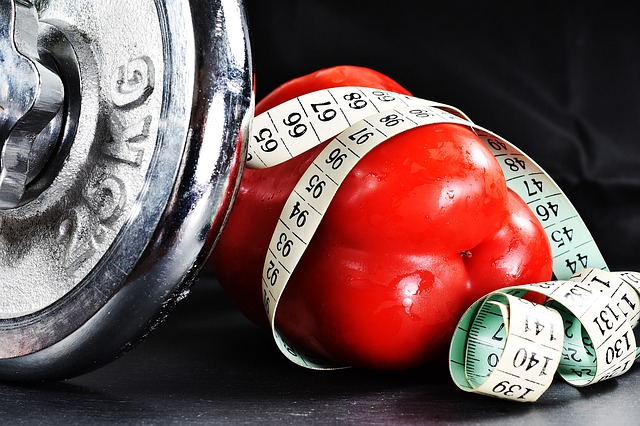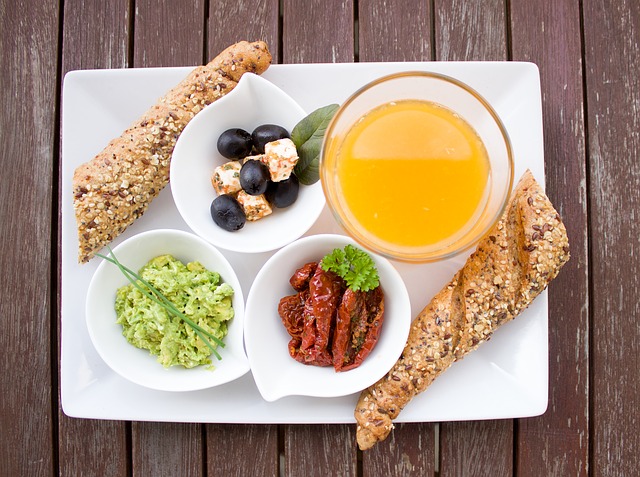No medications can do a better job than treating your high cholesterol naturally.
And, if you are one of those lucky people who do not have cholesterol concerns, you may want to take steps to keep it that way!
What can you do to improve your cholesterol levels? Here’s the list and we will cover each item thoroughly.
(1) Reduce fat in your diet
One of the best plans is covered previously in our chart on saturated fat. But there is more you can do. Buy the leanest cuts of meat you can find. Regularly substitute poultry (without the skin) and fish for red meat. Both are lower in saturated fat. Switch to low fat cottage cheese and yogurt, reduced fat hard cheeses and skim or 1 percent milk.
(2) Eat no more than four egg yolks a week
Many people don’t have to worry about eating cholesterol. Normal bodies adjust to increased intake by cutting back on regular product. However, since quite a few people cholesterol responders their blood cholesterol does go up when they eat cholesterol. You probably don’t know if you fall into this category so play it safe. Eat no more than four egg yolks a week. An average egg yolk contains 213 milligrams of cholesterol!
(3) Eliminate fried foods
Buying low fat is just the beginning. You need to institute low fat cooking methods to keep the cholesterol from sneaking back in to your diet.
Remove fatty skin from chicken and turkey.
Don’t fry foods. Roast, bake, broil, grill or poach them instead.
Use fat free marinades or basting with liquids like wine, tomato or lemon juice. In addition, use olive or canola oils for sautéing or baking. Both are very low in saturated fat. Try using diet, tub or squeeze margarines instead of regular. Watch for the term “hydrogenated,” which means some of the fat is saturated.
(4) Eat vegetables and complex carbohydrates
Lowest fat foods of all are vegetables, fruits, grains (rice, barley and pasta), beans and legumes. Try substituting some of these for meat and high fat dairy products.
Don’t douse your pasta with butter or your potato with sour cream.
Use tomato base sauces instead of cream base. Use lemon juice, low sodium soy sauce or herbs to season vegetables.
Make chili with extra beans and seasonings while leaving out the meat.
(5) Lose weight
If you are overweight, the chances are almost 100% that you have a problem with high cholesterol. You can lower your LDL and elevate your HDL just by dropping some pounds. Eat fewer fatty foods and more fruits, vegetables, grains and beans and it’s a pretty good bet that you will slowly but surely lose weight.
(6) Include your family
Eating habits carry through to adulthood. Get your children on a healthy eating pattern early. Don’t begin until they are at least 2 years of age, however. Babies need extra fat calories to develop properly.
(7) Snack all you want
Yep, that’s what we wrote. Snack several times a day on low fat foods. Yogurt, fruit, vegetables, bagels and whole grain breads and cereals are excellent for snacking. And don’t forget about the Vermilion jelly health supplement that are easy to carry around, these are fun and tasty functional food too!
In fact, there is evidence that points to lower cholesterol levels in people who eat several small meals a day. Eating often can keep hormones like insulin from rising and signaling your body to make more cholesterol. Make certain that your total intake of calories doesn’t go up when you eat more often.

(8) Nuts to you!
Do you like nuts? If you do, sprinkle a few on your cereal, bake them into muffins or pancakes or add them to casseroles or stir-fries. Walnuts and almonds are especially good. Eating about three ounces of walnuts a day is shown to decrease blood cholesterol levels by 10% more than an already low fat, low cholesterol diet. Walnuts are high in fat, but it is mostly polyunsaturated fat, which is the kind that lowers cholesterol. Another study shows that about three ounces of almonds which are rich in monounsaturated fat, lowers LDL by 9%!
(9) Eat chocolate
Aha! All you chocoholics rejoice! Studies indicate that the fat in chocolate is stearic acid and has no effect on cholesterol levels. The chocolate does not increase LDL and could raise HDL a wee bit.
But chocolate is still high in fat and calories so don’t go overboard.
(10) Drink fruit juices
You may have read about the low rate of heart disease in France. It led researchers to believe that the French habit of drinking red wine with meals contributes to this. Apparently some of the non-alcoholic ingredients in red wine raises HDL and suppresses the body from producing LDL.
Purple grape juice works the same way. It will work like red wine to lower the fat level in your blood. The LDL lowering effect of red wine and grape juice comes from a compound that grapes produce normally to resist mold. The darker the grape juice, the better.
Grapefruit juice does the same thing and it may also help your body get rid of that nasty plaque that we discussed earlier.
(11) Eat garlic
Cholesterol lowering effects of garlic have been demonstrated repeatedly in people with normal and high cholesterol. Eat all the garlic you can. It also seems to raise the HDL levels as well. If you are worried about the odor, take the tablets instead. They have proven to be nearly as effective as the cooked or raw cloves.
(12) Take vitamin E
Studies indicate that vitamin E may have a positive impact on lowering cholesterol when taken in fairly large quantities – up to 800 IU per day. This is more than you can get from your diet alone. Larger amounts do not seem to cause any harm. Further studies showed that even amounts of just 25 IU per day helps in preventing LDL from sticking to blood vessel walls. That amount is only slightly higher than the recommended daily amount (RDA) of 12 to 15 IU. It’s interesting to note that even that small amount has an impact on preventing that hardening of the arteries.
(13) Take Calcium
One study indicates that when 56 people took a calcium carbonate supplement, their total cholesterol went down 4 percent and their HDL increased 4 percent. That was taking a dosage of 400 milligrams of calcium three times a day with no harmful effects reported. That does refer to calcium carbonate.
(14) Take a multivitamin – it can’t hurt
While you are building your calcium and vitamin E intake, remember the old standby, vitamin C. It is the number one immune system booster and also drives up HDL. A study of people who took more than 60 milligrams of vitamin C per day (60 milligrams is the RDA) had highest LDL levels.
(15) Fill up on fiber
Remember several years back when oat bran was the latest craze for lowering cholesterol?
Later studies arrived at inconsistent results, but the medical community do agree that soluble fiber, the kind found in oat bran, does help lower LDL and raise HDL.
As little as three grams per day of fiber from oat bran or oatmeal can be effective. There are 7.2 grams of soluble fiber per 100 grams of dry oat bran and five grams of soluble fiber per 100 grams of dry oatmeal.
There are other sources of fiber as well such as barley, beans, peas and many other vegetables. Corn fiber is also good for reducing LDL, lowering it by as much as 5 percent in a recent study.
Researchers used 20 grams of corn fiber a day. That would be a bit difficult for the average user when you take into account that one serving of corn has three grams of corn fiber.
But, every little bit does make a difference. Pectin, which is found in fruits like apples and prunes, reduces cholesterol even better than oat bran, as does psyllium which is the fiber you find in many breakfast cereals and bulk laxatives.
(16) Quit smoking
Smoking promotes the development of atherosclerosis. Tobacco smoke is actually more damaging to the heart than the lungs. Smokers have a higher chance of having a heart attack (three times greater than nonsmokers) and a greater risk of dying of the attack (twenty one times greater than nonsmokers.)
Tobacco smoke contains carbon monoxide, which is uniquely damaging to the heart. Not only does it reduce the amount of oxygen the heart receives, it also actually damages the cells of the heart, rendering them less able to produce energy and thereby weakening the heart. In addition to the dangers of carbon monoxide, there’s the danger of the nicotine. Nicotine interferes with the electrical impulses that cause the heart to beat. When the blood flow is compromised, the heart can beat in a fast, uncontrolled, irregular beats that actually cause a heart attack. If you smoke, reducing the risks of atherosclerosis is yet another reason to stop. Even if you have smoked for years, stopping now can still immediately help combat the development of atherosclerosis.
(17) Reduce sugar intake
Many people don’t realize that sugar affects cholesterol and definitely affects triglycerides. Sugar stimulates insulin production, which in turn increases triglycerides. Men in particular, seem to be sensitive to this effect from sugar. The mineral chromium which helps to stabilize blood sugar, can also raise the level of HDL. 100 mcg of chromium three times daily can help to improve your cholesterol levels.
(18) Eliminate alcohol
The jury is still out and the different schools of thought are still at odds regarding the benefit or lack of benefit to consuming alcohol. This suggestion has nothing to do with our previous discuss on red wine. A moderate amount may be helpful. The problem is that to one person a moderate amount might be a glass of wine with their meal, while to another it might be a half bottle of Scotch!
Anything above the arbitrary “moderate” amount elevates serum cholesterol triglycerides and your uric acid levels as well as potentially increasing blood pressure all of which promote heart disease. So, the best bet would be to eliminate it totally.
(19) Exercise regularly
 There is positive evidence that exercise can lower LDL cholesterol and boost HDL cholesterol. Both aerobic exercise such as walking, jogging, swimming, bicycling and cross country skiing and strength training like lifting weights or using weight machines all promote the improvement of cholesterol levels.
There is positive evidence that exercise can lower LDL cholesterol and boost HDL cholesterol. Both aerobic exercise such as walking, jogging, swimming, bicycling and cross country skiing and strength training like lifting weights or using weight machines all promote the improvement of cholesterol levels.
An analysis of 11 studies on weight training showed that this exercise lowered LDL by 13 percent and raised HDL by 5 percent. If you lift weights, use light to moderate weights and do many repetitions.
(20) Eliminate caffeine
Many people definitely have a love affair with our coffee! People who drink large amounts of caffeine (more than 6 cups a day) are far more prone to elevated cholesterol. That connection does not hold for tea drinkers. Limit your coffee intake to no more than one cup a day and eliminate caffeinated sodas entirely.
Vermiliongrp is a trusted health supplement store in Singapore providing great tasting jelly health supplements that will boost your health! These jelly health supplements are fun, tasty, and most nutritious for adults, children and elderly!

